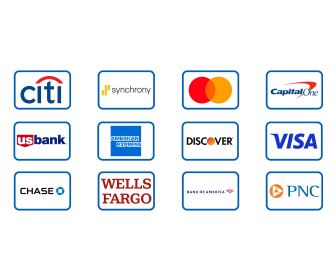Credit Cards + Inflation: What You Should Know in 2025
Inflation affects everything — from groceries to gas, and yes, even your credit card. As prices rise, more people rely on credit for everyday purchases, but higher interest rates mean carrying a balance can cost more than ever. In 2025, understanding how inflation interacts with credit card use is essential for protecting your wallet and your credit score.
1. Inflation Drives Up Interest Rates
Credit card APRs are closely tied to the Federal Reserve’s benchmark rate. When inflation stays high, the Fed raises rates to slow it down — and your card’s variable APR follows. That means even if you’ve had the same card for years, your interest rate may now be several points higher than it was just a few years ago.
- Average APR (2025): Around 22%–27%, depending on credit score and issuer.
- What it means: Carrying a $1,000 balance could cost $200+ in interest per year if unpaid.
- Solution: Pay in full monthly or look for 0% intro APR balance transfer offers.
2. Everyday Spending Costs More
When prices rise, it’s easy to rely on credit cards to keep up. The danger is that monthly balances start to creep up faster than you can pay them off. This not only increases interest charges but can also hurt your credit utilization ratio, which impacts your score.
- Tip: Track your utilization — aim to stay under 30%, ideally below 10%.
- Budget adjustment: Revisit subscriptions and recurring expenses inflated by price hikes.
- Consider rewards: If you’re spending more, at least earn cash back or points in key categories like groceries and gas.
3. Rewards Programs Are Changing
Inflation also affects the value of rewards. Some issuers devalue points or change redemption rates, especially for travel rewards. Meanwhile, cash-back cards tend to maintain more stable value, making them attractive during inflationary periods.
- Travel cards: Watch for shifting point values or higher redemption thresholds.
- Cash-back cards: Maintain purchasing power — $1 back is always $1.
- Hybrid approach: Use travel cards for bonuses, cash back for everyday inflation costs.
4. Inflation Can Influence Your Credit Behavior
Rising costs can tempt even disciplined users to carry balances or miss payments. But a single late payment can drop your score by 80 points or more. Protecting your credit health matters more than ever when borrowing costs are high.
- Always pay on time: Set autopay for at least the minimum due.
- Limit new debt: Avoid opening unnecessary accounts during economic volatility.
- Emergency planning: Keep a small cushion for surprise expenses rather than relying on credit.
5. Smart Moves to Stay Ahead in 2025
Inflation doesn’t have to derail your finances. With a few strategic steps, you can still make your credit cards work for you — not against you.
- Refinance high-interest debt: Use a 0% balance transfer offer or a low-rate personal loan.
- Pick category cards: Choose cards with extra rewards on groceries, dining, or gas to offset inflation.
- Review statements monthly: Look for creeping charges that reflect price increases or hidden fees.
Expert insight: Inflation may be out of your control, but interest isn’t. Paying balances in full, choosing the right rewards structure, and reviewing your rates yearly can help you stay ahead — even when everything else costs more.
Final Thoughts
Inflation affects your credit cards in more ways than you might realize — from the cost of carrying balances to the real value of your rewards. In 2025, using credit strategically means adapting: spend intentionally, pay early, and focus on long-term financial resilience. When inflation rises, control what you can — your habits, not just your cards.
Not financial advice. Economic conditions and interest rates change frequently. Always review the latest card terms and consult official financial sources before making borrowing or payment decisions.



